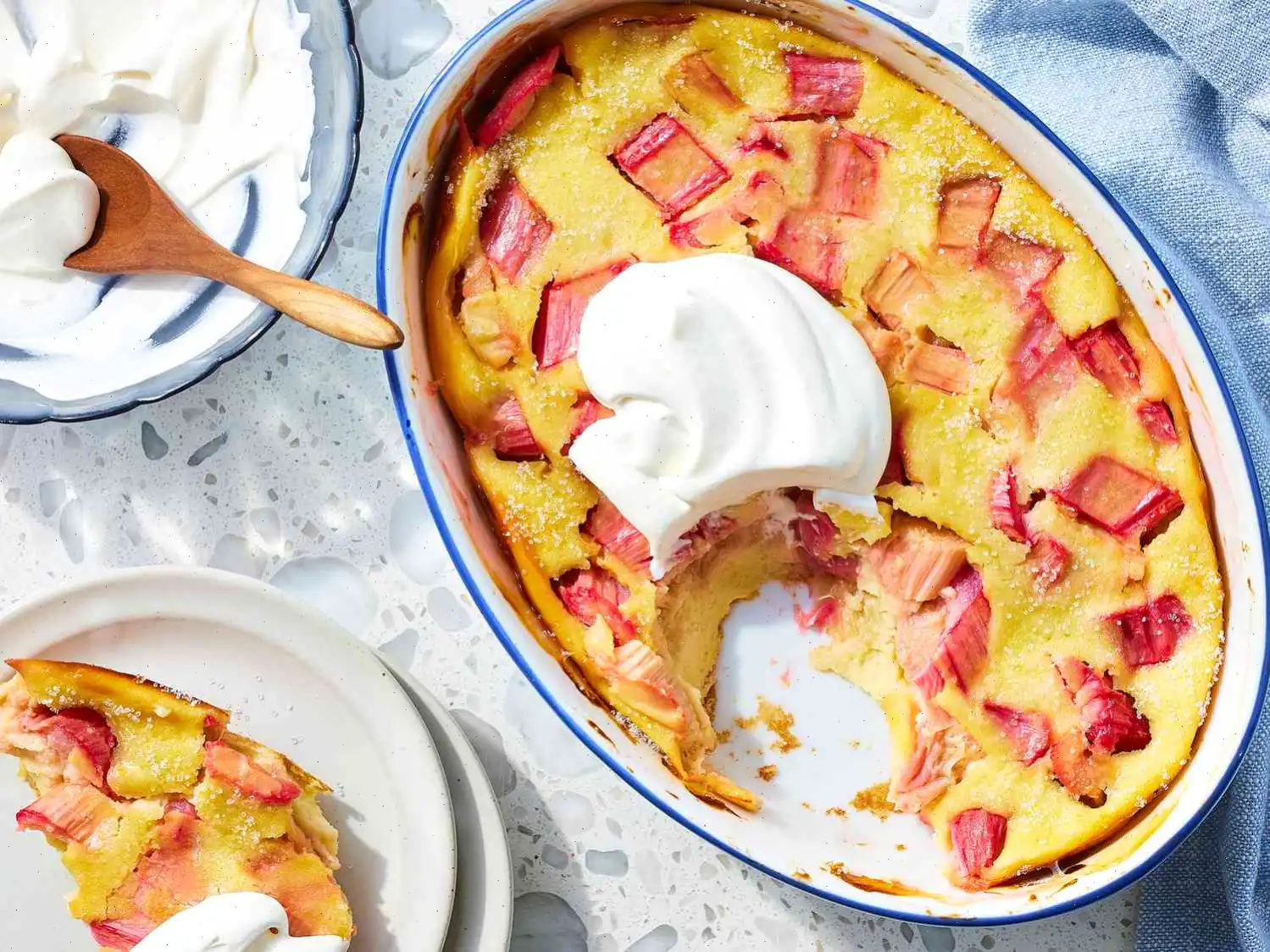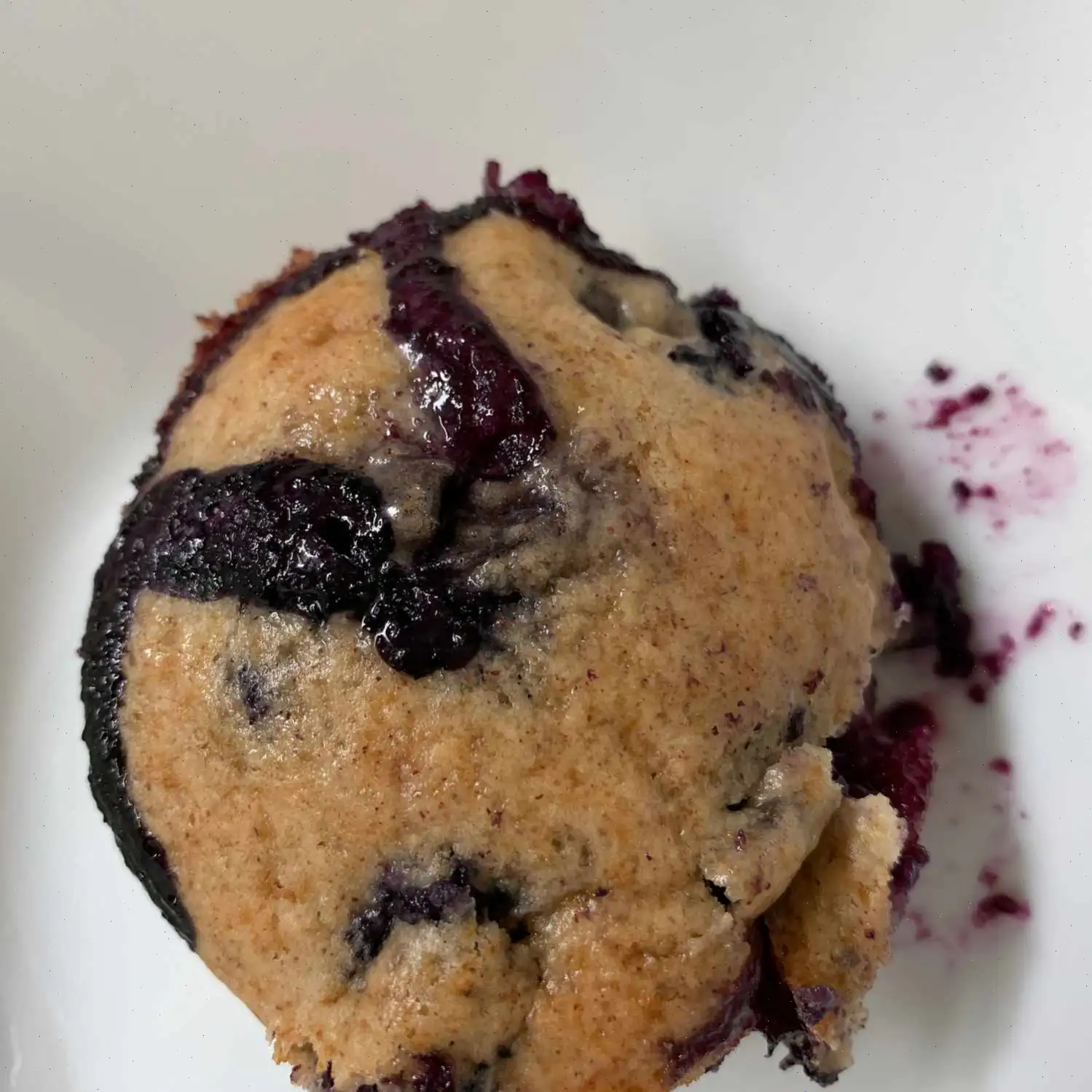
Rhubarb-Buttermilk Clafoutis Recipe
Ingredients
- 1 pound fresh rhubarb, cut into 1-inch pieces
- 1 teaspoon butter
- 1/2 cup all-purpose flour
- 1/8 teaspoon baking powder
- 1/8 teaspoon salt
- 3 large eggs
- 1 cup buttermilk
- 1/3 cup white sugar
- 1 teaspoon vanilla extract
- 1 teaspoon orange zest
- 1 tablespoon coarse sugar, such as turbinado
- Whipped cream, for serving
Directions
Step 1: Preheat the oven to 400F (200C). Line a 10x15-inch rimmed baking sheet with parchment paper.
Step 2: Spread the rhubarb in an even layer on the prepared baking sheet. Roast in the preheated oven for 10 to 15 minutes until the rhubarb is tender.
Step 3: Let the roasted rhubarb cool for 30 minutes.
Step 4: Reduce the oven temperature to 350F (180C). Grease a 9-inch round or oval baking dish with 1 teaspoon of butter.
Step 5: Transfer the cooled rhubarb to the prepared baking dish.
Step 6: In a small bowl, stir together the flour, baking powder, and salt.
Step 7: In a large bowl, whisk together the eggs, buttermilk, white sugar, vanilla extract, and orange zest. Add the flour mixture and stir until the batter is smooth.
Step 8: Carefully pour the batter over the rhubarb in the baking dish.
Step 9: Bake in the preheated oven for about 30 minutes until the batter is set.
Step 10: Sprinkle the top with coarse sugar and bake for an additional 10 to 15 minutes, or until the top is lightly browned.
Step 11: Serve with whipped cream.
Nutrition Facts (per serving)
- Calories: 168
- Total Fat: 4g (5% DV)
- Saturated Fat: 2g (8% DV)
- Cholesterol: 97mg (32% DV)
- Sodium: 174mg (8% DV)
- Total Carbohydrate: 27g (10% DV)
- Dietary Fiber: 2g (6% DV)
- Total Sugars: 16g
- Protein: 6g (13% DV)
- Vitamin C: 7mg (8% DV)
- Calcium: 136mg (10% DV)
- Iron: 1mg (6% DV)
- Potassium: 329mg (7% DV)
* Percent Daily Values are based on a 2,000 calorie diet. Your daily values may be higher or lower depending on your calorie needs. Consult a healthcare professional for specific dietary advice.
The History of Rhubarb-Buttermilk Clafoutis
The clafoutis is a classic French dessert originating from the Limousin region in central France. Traditionally, it is made with black cherries baked in a thick, flan-like batter, creating a custardy texture that is both tender and slightly firm. Over time, inventive bakers began experimenting with seasonal fruits, and rhubarb became a favored variation due to its tartness, which balances the richness of the batter. The addition of buttermilk enhances the tangy flavor and contributes to the desserts light, airy consistency, making it a refreshing twist on the traditional clafoutis.
Regional Characteristics
While clafoutis originated in Limousin, each region of France has its own take on the dessert. In the north, bakers favor berries and stone fruits, while the south often incorporates citrus zest or almonds into the batter. The rhubarb-buttermilk clafoutis reflects a northern European preference for slightly tart fruits and dairy products like buttermilk, which is more common in regions with cooler climates. The orange zest in this recipe adds a fragrant note typical of contemporary French adaptations, blending regional traditions with modern flavor sensibilities.
Differences from Similar Dishes
Clafoutis is often compared to tarts, flans, and cobblers, but it has distinct differences. Unlike a tart, it does not have a pastry crust; instead, the batter itself envelops the fruit. Compared to a flan, the texture is lighter and more cake-like due to the flour and eggs, while cobblers typically feature a biscuit or dough topping rather than a custard-like batter. The use of rhubarb introduces a natural tartness that distinguishes this dish from the sweeter cherry or berry clafoutis, creating a unique flavor profile that balances richness with acidity.
Where It Is Commonly Served
Rhubarb-buttermilk clafoutis is versatile and can be served as a dessert, brunch item, or even a breakfast treat. In French households, it is often enjoyed warm straight from the oven with a dollop of whipped cream. In cafes and bistros, it may be presented elegantly in individual ramekins, making it suitable for both casual family meals and refined gatherings. Its light texture and seasonal fruit make it particularly popular in spring and early summer when fresh rhubarb is abundant.
Interesting Facts
- Clafoutis comes from the Occitan word "clafots," meaning "to fill," reflecting the dishs design of fruit bathed in batter.
- Rhubarb, originally cultivated in Asia for medicinal purposes, was introduced to Europe in the 18th century and gradually became a staple in desserts.
- The addition of buttermilk is a modern innovation; traditionally, milk or cream was used, but buttermilk adds a subtle tang and improves browning during baking.
- Unlike many baked desserts, clafoutis improves in flavor if served slightly cooled, allowing the custard to set while retaining moisture.
- While cherries are traditionally unpitted for a slightly bitter depth, rhubarb clafoutis relies on its natural tartness to achieve the same effect without pits.
FAQ about Rhubarb-Buttermilk Clafoutis Recipe
Comments
Patrick Brown
06/04/2025 10:56:29 AM
So tasty! Just the right amount of sweetness. My husband absolutely loved it. I didn't have enough rhubarb, so I used some gooseberries instead. Turned out to be a delightful substitution!
William Green
05/11/2025 05:12:50 AM
I decided to make a smaller batch of this recipe because I didn't have a full pound of fresh rhubarb. My husband absolutely loved it, and we enjoyed it with a scoop of vanilla ice cream.








